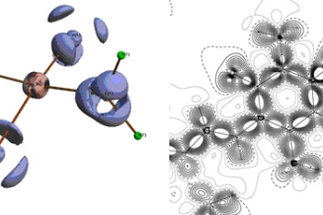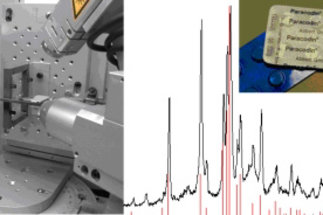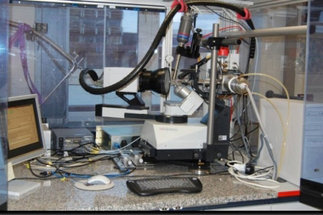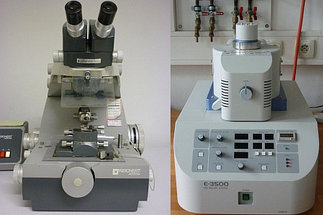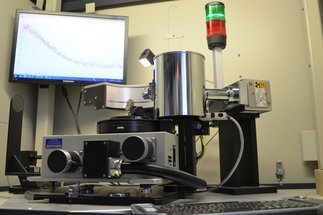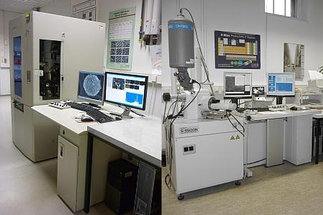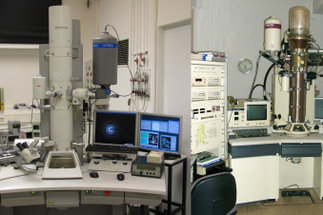Chemical Crystallography and Electron Microscopy
The departmental services include the characterization of materials and the structure elucidation of chemical substances by crystallographic and microscopic methods. This entails single crystal structure determination, transmission and scanning electron microscopy together with a wide range of methods for sample preparation. Our research areas are electron density determination, polymorphism and crystal-engineering studies.
Research Topics:
The electron density of a molecule is the key for understanding its chemical interactions. On one hand, the electron density can be...
[more]
Polymorphism describes the ability of a chemical substance to form more than one crystalline state. These different crystalline states have different properties with respect to solubility, colour, or melting point. This phenomenon is known...
[more]
Instrumentation:
Currently, there are three single crystal diffractometers in use: (Bruker AXS Mach3) with area detectors (Apex II, KappaCCD, Proteum). The X-rays are generated by rotating anodes (Bruker AXS FR591) with Molybdenum and Copper anodes, respectively.
[more]
The sample preparation for electron microscopy is of utmost importance. Delicate structures must not be destroyed or changed; the sample should be representative of the whole material.
[more]
For powder diffraction there is one Stoe STADI P diffractometer, equipped with a primary monochromator and Cu-Kα1 radiation in Debye-Scherer-Geometry, plus a position sensitive image plate detector.
[more]
Scanning electron microscopy is employed to visualize details of the sample surface on the nano meter scale.
[more]
Transmission electron microscopy of nano particles and nano structured materials (zeolites and mesoporous silicates and their replica) reveals structural details in the sub nanometer range
[more]
Research Reports:
